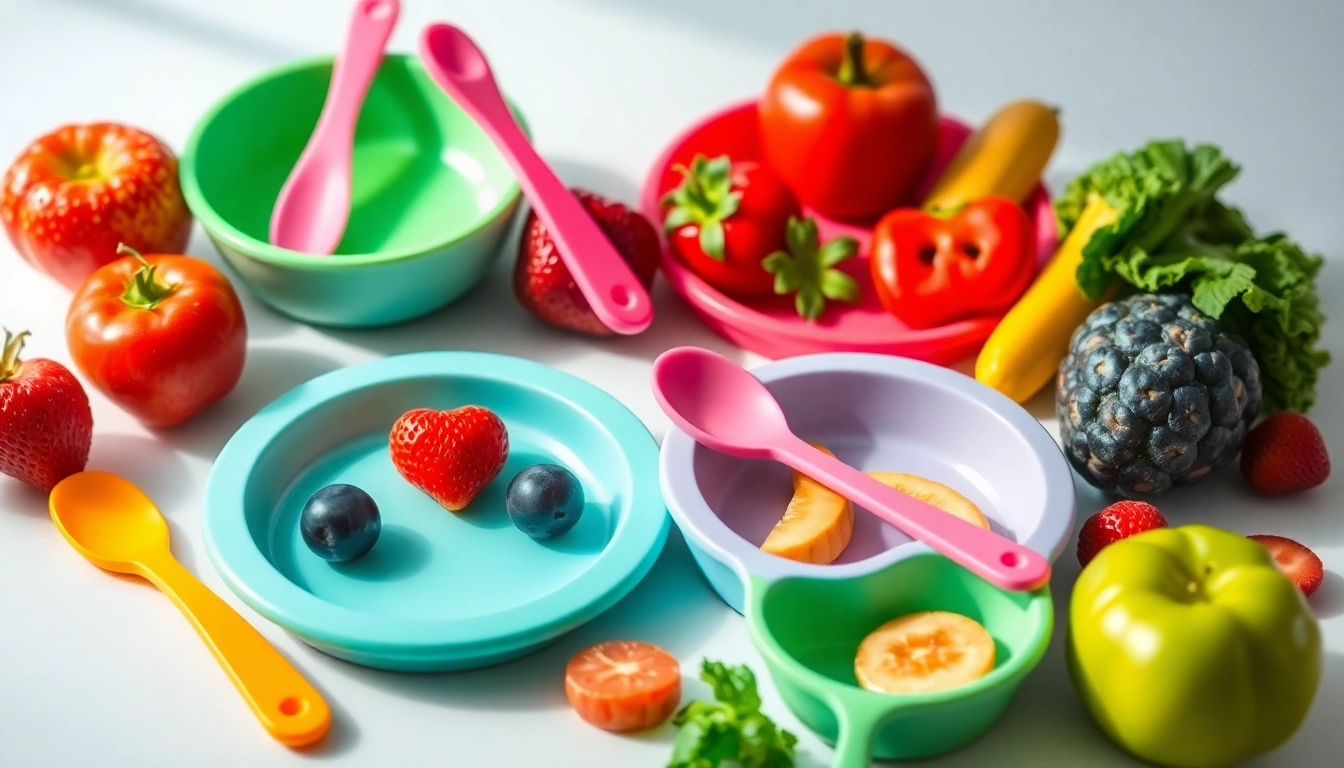Understanding the Importance of Baby Weaning Foods for Infant Development
Baby weaning foods play a crucial role in supporting the healthy growth and development of infants during their early stages. Transitioning from exclusive breastfeeding or formula feeding to solid foods marks a significant milestone, influencing not only physical growth but also cognitive and sensory development. Ensuring that these foods are of high quality, nutritionally balanced, and safe is essential for fostering a positive eating experience and laying the foundation for lifelong healthy eating habits. As modern parents seek reliable options, many turn toward Baby weaning foods that emphasize Italian heritage of quality and safety. In this comprehensive guide, we explore the key nutrients necessary for early growth, highlight the importance of quality assurance, and examine how proper weaning fosters speech and motor skills development.
Key nutrients to support early growth
Infants require a precise balance of essential nutrients to promote proper growth, immune function, and neurological development. During weaning, providing foods rich in iron, zinc, calcium, vitamins A, D, and C, along with healthy fats, is vital. Iron, for example, is pivotal for brain development and is often deficient in early diets; therefore, iron-rich foods like pureed meats and fortified cereals are prioritized. Calcium and vitamin D support strong bone development, while vitamin C enhances iron absorption from plant-based sources. Healthy fats, particularly long-chain omega-3 fatty acids such as DHA, are critical for neural development and visual acuity. These nutrients can be supplied through a variety of organic, Italian-made products, ensuring both safety and authenticity, thereby promoting balanced early growth.
The role of quality and safety in baby foods
Safety and quality stand as non-negotiable pillars when selecting baby foods. The Italian food industry is renowned for its strict regulations, rigorous quality controls, and high standards that guarantee the purity and safety of ingredients. Certifications for silicone accessories, such as those used for plates and utensils, confirm they are free from BPA, phthalates, and other harmful substances, ensuring safe contact with delicate infant skin and mouths. Organic ingredients further reduce exposure to pesticides and additives, supporting holistic health. Responsible sourcing, strict manufacturing protocols, and transparent labeling allow parents to make informed choices, contributing to a stress-free weaning process rooted in trust and safety.
How baby weaning foods influence speech and motor skills
Introducing textures and flavors through baby weaning foods not only nurtures physical growth but significantly impacts speech and motor skill development. Chewing and mouthing stimulate muscles involved in speech, such as the tongue, lips, and cheeks, laying groundwork for language acquisition. For example, soft yet varied textures in purees and small solids develop oral motor skills necessary for clear pronunciation. Additionally, self-feeding with easily graspable utensils in silicone and bambù promotes fine motor skills, hand-eye coordination, and independence. These interactions foster sensory exploration and reinforce neural pathways linked to communication and motor control, highlighting the importance of a diverse, safe, and engaging diet during this formative phase.
Top Tips for Selecting the Best Baby Weaning Foods
Reading labels: what to look for in baby food packaging
Parents should scrutinize labels to ensure nutritional adequacy and safety. Look for transparent ingredient lists emphasizing organic and Italian-origin components, avoiding preservatives, artificial flavors, and added sugars. Certifications indicating BPA-free silicone accessories and organic production provide additional assurance. Pay attention to serving sizes and texture recommendations aligned with the infant’s developmental stage. Clear expiration dates and storage instructions are also essential. Educating oneself on common food allergens and checking for potential cross-contaminations ensures safe, personalized choices suitable for sensitive young tummies.
Choosing organic and Made in Italy options
Opting for organic, made in Italy products ensures adherence to high safety standards and supports local economies. Italian organic foods are subject to stringent regulations, minimizing chemical residues and maximizing nutritional integrity. The country’s rich gastronomic heritage translates into diverse flavors and high-quality ingredients tailored for infants. Furthermore, Italian brands like Bèbeboom emphasize sustainable sourcing, transparent supply chains, and rigorous testing, making them reliable choices for health-conscious parents committed to providing their children with authentic and safe weaning foods.
Incorporating variety to promote acceptance and nutritional balance
Introducing a wide range of flavors and textures fosters acceptance and stimulates the infant’s palate, decreasing the likelihood of picky eating later. Rotating vegetables, fruits, grains, and proteins ensures comprehensive nutrient coverage. Incorporating colorful, appealing options like rainbow silicone plates and bowls can enhance mealtime engagement. The use of innovative accessories, such as soft-edge plates and ventosa bowls, allows safe exploration of new foods. Emphasizing variety also introduces infants to cultural tastes and traditions, nurturing curiosity and fostering positive associations with eating from the earliest stages.
Best Baby Weaning Foods Products and Accessories
Silicone plates, bowls, and utensils designed for safety
Choosing the right accessories is crucial for safety and ease during weaning. Certified silicone products, such as rainbow-shaped plates, ventosa bowls, and soft-edge utensils, are designed to be non-toxic, durable, and easy to clean. Their vibrant colors and ergonomic shapes encourage self-feeding and sensory development. Additionally, accessories with ventosa bases ensure stability, preventing slips that could cause mess or injury. The combination of functional design and safety certification makes these accessories not just practical, but integral to a smooth transition towards independent eating.
Prepared organic purees and snacks for different stages
High-quality organic purees and snacks are available in various stages, catering to evolving infant preferences and developmental milestones. Early purees focus on smooth textures for initial introduction, while subsequent options incorporate tiny, manageable chunks to promote chewing skills. Ideal products include organic pasta, snacks, biscuits, and homogeneized items prepared with Italy’s finest ingredients, guaranteeing safety and nutritional value. These ready-to-eat options simplify busy parents’ routines, ensuring balanced, wholesome meals that support growth and exploration.
Innovative accessories to facilitate self-feeding and development
Innovative tools, such as ergonomic utensils, multipurpose plates, and nibble bowls, foster motor skill development and independence. Posatine in silicone and bambù are designed to fit comfortably in little hands, encouraging grasping and self-directed eating. These tools also support speech development by promoting oral muscle activity. The strategic use of such accessories, combined with a varied diet, cultivates confidence in self-feeding while advancing sensory, motor, and linguistic skills integral to early childhood growth.
Integrating Baby Weaning Foods into Daily Routines
Developing a flexible and nutritious feeding schedule
Creating a consistent yet adaptable meal routine helps infants develop healthy eating habits. Introducing regular snack and meal times aligned with developmental cues maintains nutritional intake and emotional security. Using thoughtfully designed silicone accessories makes mealtimes more predictable and engaging. Flexibility allows adjustments based on the infant’s appetite and reactions to textures and flavors, ensuring a positive experience that encourages self-feeding and curiosity.
Creating engaging mealtime environments
Mealtime should be a nurturing and stimulating experience. Colorful, safe, and functional accessories like rainbow plates and ventosa bowls captivate infants’ attention, promoting focus and participation. Maintaining a calm and encouraging atmosphere supports exploration and reduces fussiness. Incorporating family members and mimicking positive eating behaviors reinforces social attachment and modeling, essential for instilling love for healthy foods.
Monitoring progress and adjusting textures and flavors
Observation during feeding sessions helps identify readiness for new textures and flavors. Signs of acceptance include voluntary swallowing and interest in foods, while rejection may signal discomfort or evolving preferences. Gradually increasing texture complexity—from purees to small solids—enhances oral motor skills and facilitates transition to family foods. Regularly rotating ingredients and introducing culturally rich flavors strengthen the child’s palate and nutritional profile, ensuring ongoing developmental progress.
Measuring Success and Overcoming Challenges in Baby Weaning
Recognizing signs of food acceptance or aversion
Success in weaning is evidenced by consistent acceptance, ease of swallowing, and willingness to try new foods. Conversely, persistent rejection or adverse reactions may require re-evaluation of textures, flavors, or allergies. Engaging infants with a variety of sensory experiences and maintaining patience helps overcome initial resistances, laying a solid foundation for healthy eating habits.
Addressing common allergies and sensitivities
Early identification of food sensitivities involves gradual introduction and close monitoring. Consulting with healthcare professionals can aid in managing allergies, especially with common triggers like eggs, nuts, or dairy. Ensuring foods are prepared in controlled environments and sourcing allergen-tested products minimize risks, making the weaning journey safer and more confident.
Long-term benefits of early healthy eating habits
Instilling nutritious eating patterns during weaning fosters lifelong health benefits, including reduced risk of obesity, chronic diseases, and nutritional deficiencies. Early exposure to diverse, genuine, and well-balanced foods promotes a positive relationship with eating and supports optimal cognitive and physical development.








